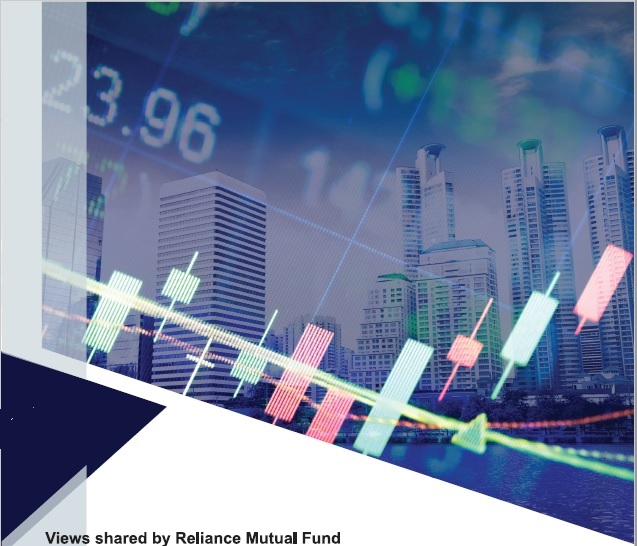Views shared by Reliance Mutual Fund
Panic Grips Indian Bond market as the 10 year Indian G Sec yields rose over 7% recently. Yields are up by almost 70 bps from the lows seen in June 2017 and levels last seen in September 2016.
Reasons:
Fiscal Concerns:
Concerns around the Bank recapitalization bonds seem to be overblown for now and if kept below the line item, it will have no implications for headline fiscal deficit. Though the further details of the structure are keenly awaited, the fear of it being given SLR status / marketable security status will hurt incremental demand by banks in government bonds and this has kept market participants to being cautious.
GST tax collections at the current run rate might be a cause of worry but uncertainty of tax refunds fail to give a clear picture of the tax revenue shortfall.
Excise cuts due to sharp rise in crude oil prices will have direct impact on centre as well as states revenue collections
OMO Sales:
RBI has sold almost INR 1,00,000crs of GSecs in the open market to suck out permanent / durable liquidity in the market. On an average INR 30,000 crs of additional monthly supply has hit market through OMO sales broadly in the 3 –8 yrs maturity bucket.
This has resulted in sharp rise in yields at the shorter end of the GSec yield curve. Though RBI at the start of the OMO sale cycle had allayed market fears of causing disruptions to the normal market borrowing plans, it has now started affecting the demand – supply very negatively.
Sharp Rise in Crude Oil price:
Crude Oil prices surged to highest levels post 2015 amidst political uncertainty in the Middle East Region combined with strong assurances from OPEC and Russia regarding the extension of the production cut.
Rise in Crude oil price has both fiscal as well as inflationary impact for India.
Higher Inflation:
Continuous rise in CPI inflation in last six months. Core CPI inflation at 4.6% levels has risen from below 4% levels. Bond markets are taking out all rate cut expectations and poised for a prolonged pause with an outside chance of a rate hike in FY 2019.
Continuous revision of fuel prices on the back of rising crude oil prices has also led to rise in inflation expectations though excise cuts have compensated for sharp increase in retails prices.
Our View:
Volatility in Crude Oil prices and fiscal concerns will keep bond markets on the edge in the short term. Though a 10$ rise in crude oil prices has limited impact on inflation (25-40bps), it has larger implication as far as Fiscal Deficit in concerned.
Excise hikes had resulted in huge revenue collections during the last 2 years when oil prices continued to slide. Roll back of excise duties in case of continuous rise in oil prices, will cause massive shortfall in revenue collections especially at the time when the tax system has undergone major reform recently (GST implementation) Though the Fiscal clarity, impact of GST will emerge only post the December quarter, postponement of fiscal consolidation process can be seen as a temporary short term negative as far as FPI investors are concerned.
We feel concerns about fiscal slippage are already priced in the current yields. Fiscal uncertainty issue is positively addressed by the finance ministry time and again. We do not expect any major fiscal expansion though there might be some deviation from the fiscal glide path defined in the FRBM Act. The government has already started cutting on expansion and if need be, there is space to accommodate more supply as it has intentionally planned for a light supply inQ4 FY18. If the government sticks to this year’s fiscal deficit target of 3.2% GDP, it will be a pleasant surprise for the market and yields can ease sharply.
On the OMO supply front, our estimates suggest RBI should be nearing its end of OMO sale and demand – supply (exfiscal slippage) will turn positive in Q4 FY 18.
Crude prices can be the only dampener as far as India macro story is concerned and its upward trajectory will be watched very closely.
RBIs hurdle for further rate accommodation is very high (as spelt out in the recent MPC minutes) and with inflation trajectory higher than its 4% target & concerns about fiscal deficit, bar for a rate cut is extremely high in the upcoming monetary policy.
With the RBI’s current liquidity stance and relatively higher absolute yields, we expect Liquidity trades to dominate
Macros trades from medium term perspective. Carry will be the biggest driver for returns in the current interest rate regime. We clearly expect spread assets to outperform going ahead and yield curve to steepen as carry remains attractive at the shorter end of the yield curve. Also roll down benefits will add to the returns on steeper yield curves.
We also expect bond yields to remain range bound from near term (3 -6 months) perspective as market starts pricing in a prolonged pause on policy rate action and an outside chance of a rate cut subject to upcoming GDP & Inflation prints & demand – supply to take precedence in the short term. We do not foresee any major swings in yields unless commodity prices rally significantly further or US yields jumps materially.
Current spread between 10 yr GSec and Repo is ~90 bps which offers a tactical call for duration exposure.
Further we recommend, longer term fundamental view on Interest rates can be taken in Q4 FY 18, post the clarity on this year’s fiscal deficit target and next year’s budget announcement.
Common Source: Bloomberg, RMF Internal Research, RBI, Finance Ministry of India.










